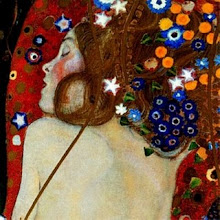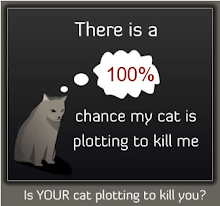Whenever I think of albatrosses, I think of Coleridge. In my annotated book of English Poets of the Romantic Period, the annotation for shooting the albatross reads: His shipmates cry out against the ancient Mariner for killing the bird of good luck.
And so here I am, reading this article about the albatross in Cornell University's Living Bird magazine (this issue is not online yet) from their spectacular ornithology program, from which my childhood friend Julie graduated more than a few years back. I subscribe to Living Bird in part because I love birds and in part because I think our world has become such a horribly difficult place in which birds struggle to survive. Sometimes my husband laughs because I think that waking up without hearing birds in my yard would be absolutely unimaginable. It was the one thing that gave me reservations about the idea of getting hurricane impact-resistant windows. Would I still hear my cardinals and orioles and mockingbirds and bluejays when I awoke in the mornings? Thankfully I do. I really love birds and some birds amaze you with their wonderful songs or artistry of feathering while others are simply magnificent.
When I think of truly magnificent, I definitely think of the albatross. If you've never been lucky enough to see one, all I can tell you is that really, their wingspan is simply beyond imagining. I chose the photo at the top just so you get the sense of scale. And so you can imagine my horror when in reading Cliff Beittel's wonderful article in Living Bird I see this:
That's a dead baby albatross and from its remains it's easy to see that what killed it was ingestion of plastic. Quoting Beittel's article, sometimes adults mistake plastic for prey and return to their nests regurgitating plastic to their chicks, some of which will die from starvation while their stomachs fill with refuse rather than food.
It takes only two ounces of plastic to kill an albatross chick.
I used to drive everyone in my family crazy by cutting plastic things like those plastic soda can 6-pack rings into pieces so nothing could get caught in them. Now I wonder if that's not just making them of a better size for feeding to a bird's young.
Plastic both does terrible things (occupying space better occupied by food) and is made of terrible things (both plasticizing agents and monomer components are pretty nasty stuff). But I guess paper is no better since that's largely going to cost trees that are needed by birds as well.
Looking at that photo above, I'm just having one of those days in which I feel like there are way to many people on this planet doing way too many thoughtless, or even worse thought-out and still bad, things.
I love birds. In fact, I love most living things.
I hope a fair number of them survive us.
© Bright Nepenthe, 2010
























No comments:
Post a Comment